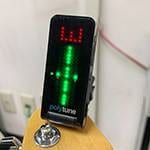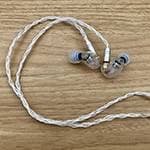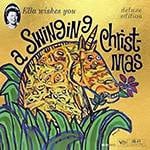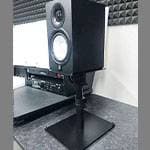SATIN is equipped with the following NR (noise reduction) circuit, which is rare for a tape emulator. NR is a circuit that reduces the hiss noise of the tape. In SATIN, it is called Compander, but the reason for this will be explained later.
Since SATIN avoids using the direct name of NR, we will note the corresponding name. Dolby and dbx are company names, and are used for professional use and mainly for cassette tapes.
- A-Type = Dolby A (for professional use)
- A-Type Mod = Dolby A (Modification) (for professional use)
- B-Type = Dolby B (for cassette tapes)
- uhx Type I = dbx I (for professional use)
- uhx Type II = dbx II (for cassette tapes)
In NR, the circuit is arranged in the position shown in the diagram below. The circuit before input to the deck is called an encoder, and the circuit after output is called a decoder. In NR, the encoder generally compresses the signal based on rules using a compressor, and then records it to tape. The decoder uses an expander to expand the compressed signal back to its original sound. Because it uses a compressor and expander, it is called the compander method. In Japan, I think it is more common to call it noise reduction.
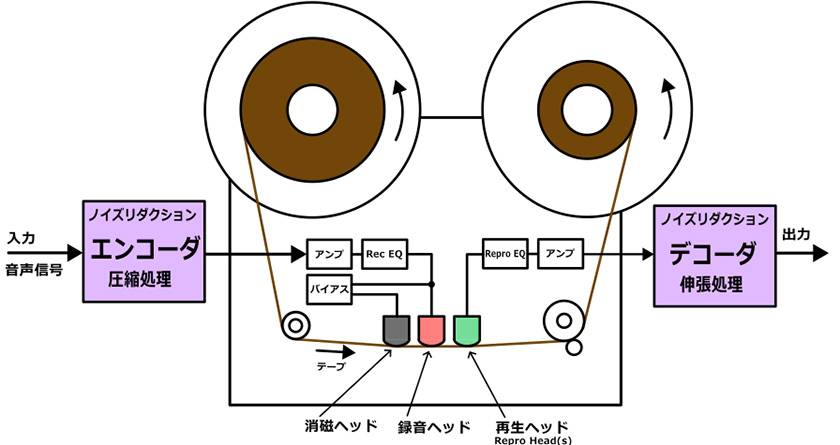
Dolby A(A-Type)
This was the first professional noise reduction system announced when Dolby Laboratories was established in 1965. It was introduced mainly in the film industry from the 1970s onwards. It became widely used after being used in films such as “A Clockwork Orange”, “Star Wars” and “Close Encounters of the Third Kind”. The Dolby A NR system is independent as an individual device, as shown in the photo below, and is used by connecting it to a recorder.
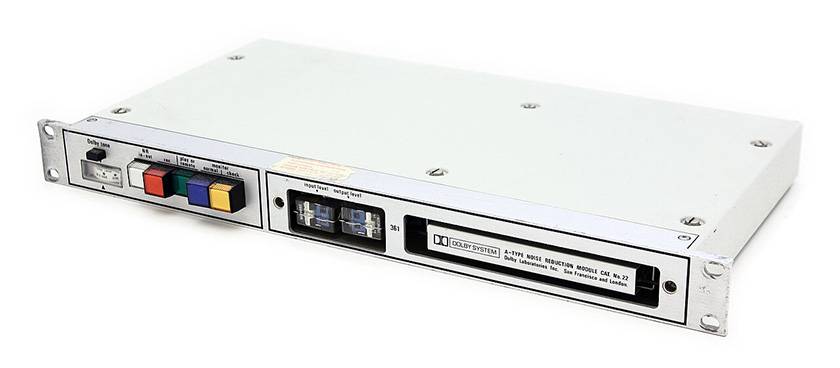
Dolby361 (1970), CC BY-SA 3.0 (quoted from Wikipedia)
Dolby A has a block structure as shown in the diagram below. The audible range of 20Hz to 20kHz is divided into four sections, and the small sounds in each band are made louder, while the loud sounds are left as they are, and then the sound is compressed and recorded on tape. When playing back, the opposite process of decompression is carried out, and this reduces hiss noise by about 10 to 15dB (about 1/3 to 1/5). Also, the level at which the sound is recorded on tape is important. This is because if the compression and decompression processes cannot be correctly matched, it will not be possible to accurately restore the sound. Dolby A was composed using a signal tone called Dolby tone.
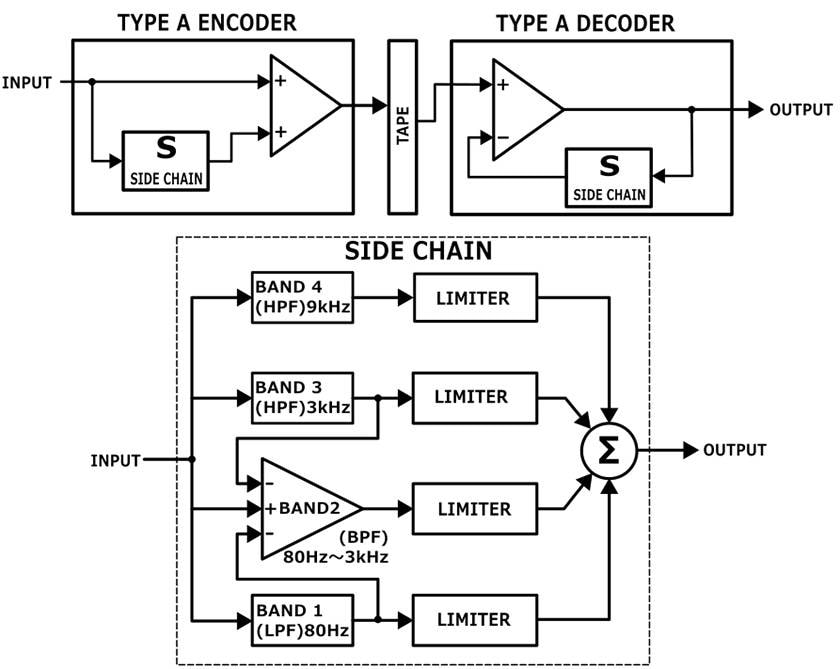
The following diagram shows the frequency spectrum of a silent state. Without passing through NR, there is a certain amount of hiss noise, but when passing through Dolby A, you can see that it is reduced by more than 10dB. In places where there is a lot of hiss noise, such as in silence or in quiet sounds, it is recorded on the tape as a loud sound, and when it is played back, it is returned to its original volume, so the hiss noise is also reduced.

Next, I tried adding a 220Hz sine wave at a high volume. You can see that the noise has returned to a volume close to the None setting. When a loud sound is playing, the small hiss noise becomes less noticeable due to the masking effect, but the compression is kept low to prevent the tape from becoming saturated.
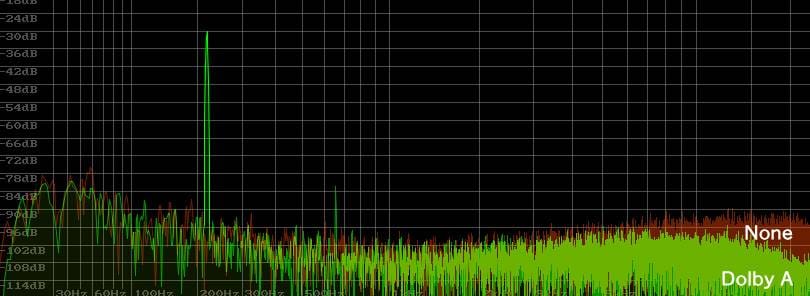
I've drawn the following diagram to make it a little easier to understand. This is how Dolby A works at low, medium and high volumes. The volume of the input and output sound will be the same, but the volume recorded on the tape will be different for low volumes. This is done for each of the four bands.
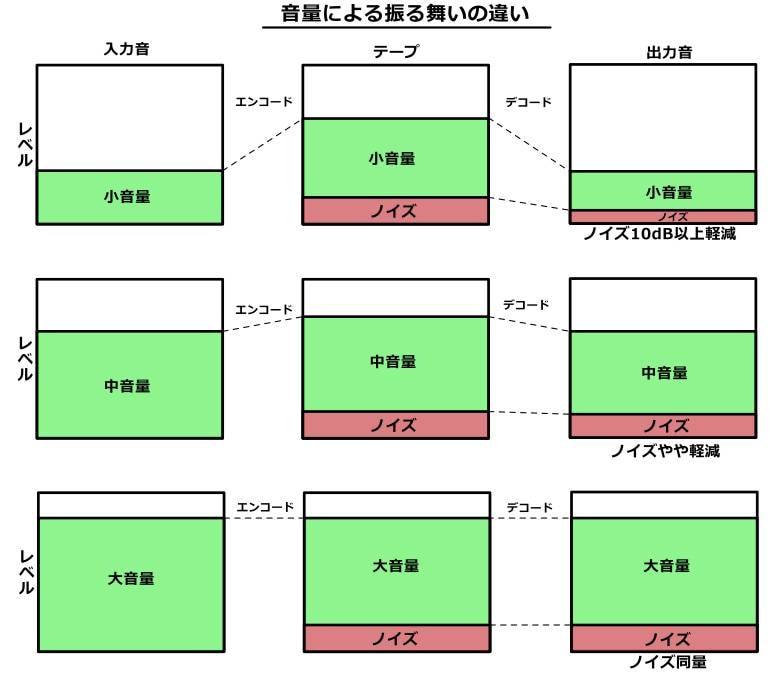
I have prepared sound samples with extreme settings so that you can experience the principle for yourself. The first sound is unprocessed NR, and there is hiss noise at a level similar to that of a cassette tape. The hiss noise is present at a constant level regardless of the input sound. Next, the sound is processed through Dolby A. In a silent state, the hiss noise is not noticeable, but you can see that it rises and falls with the sound. The actual hiss noise level of an open-reel tape is much lower, so it is not as noticeable.
Dolby A Modification(A-Type Mod)
This mode is not used for NR, so you need to understand its meaning and how to use it. This is a modification called “Cat-22” that cuts out several parts of the sound, such as Dolby 361. It only uses the encoding stage and does not use the decoder. Internally, only HPF BAND3 and 4 function as normal, and the rest do not function. Small sounds above 3kHz are amplified, and large sounds are not modified. This mode is not used for NR, so you need to understand its meaning and how to use it. This is a modification called “Cat-22” that cuts out several parts of the sound, such as Dolby 361. It only uses the encoding stage and does not use the decoder. Internally, only HPF BAND3 and 4 function as normal, and the rest do not function. Small sounds above 3kHz are amplified, and large sounds are not modified. As a result, the sound emphasizes the sense of airiness in the high-pitched range of vocals and other sounds. In terms of operation, you could say it's a multi-comp-like usage. Ray Dolby, the inventor of Dolby NR and the company's president, did not seem to like this kind of modification that was not the original intended use.

The sample below compares the case where both the encoder and decoder are set to None, and the case where only the encoder is set to A-Type Mod. When set to A-Type Mod, you can see that the sound has a sense of transparency at low volume, and the breathing is emphasized.
SATIN also has a Dolby A Mod decoder, so it can also be used as an NR that only responds to high-pitched sounds.
Dolby B(B-Type)
This is the NR for cassette tapes that appeared on the market in 1970. The manufacturer that produced the first deck with Dolby B was Nakamichi, although it was an OEM. Dolby A was sold as a unit for professional use, but Dolby B was licensed to many manufacturers for consumer use, and this became a business model that greatly expanded Dolby's business. In other words, Dolby provided the design and know-how, and the manufacturers themselves carried out the manufacturing, meaning that Dolby NR was built into cassette decks. At first, it was made using discrete components, but it seems that Dolby soon began providing IC chips. With the spread of cassette tapes from the late 1960s, Dolby NR became an indispensable function, and Dolby B was at the heart of this.
Unlike Dolby A, Dolby B is consumer-use noise reduction, so it needs to be inexpensive and simple. Also, considering how cassette tapes were used, it was not always the case that the same deck was used for recording and playback, so compatibility was also important. Dolby B was the NR that fulfilled these conditions, and it was a specification that struck a good balance between performance, price, ease of use, etc. After that, high-performance Dolby C and S were also developed, but Dolby B continued to be used due to its ease of use and the timing of the times.
Dolby B is basically the same as Dolby A in terms of the structure of the encoder and decoder, but the main difference is in the bandwidth sliding method. Rather than processing each frequency band separately, if the input signal level is high above a certain frequency, the curve shifts to higher frequencies as shown below. If the input signal level is low, the high-frequency components are boosted and recorded, and the noise reduction effect is significant. Although it does not quite match Dolby A in terms of its 10dB hiss noise reduction effect, I could definitely feel the difference in noise reduction with and without it on cassette tapes, which originally had a lot of hiss noise.
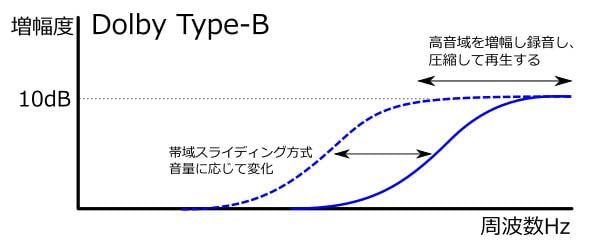
In addition, the low-key hiss noise reduction effect was also suitable for compatibility absorption. Although the NR system is normally very sensitive to the recording level on the tape, even if it was used roughly, it did not sound too unnatural. Furthermore, it was also common practice to play back tapes recorded in Dolby B by deliberately turning the decoder off. This had the effect of compensating for the high-frequency components in the playback equipment and cassette tapes of the time, which tended to be muffled. This could be said to be an extreme use of the A-Type Mod.
With SATIN, you can create a cassette tape sound by setting the tape speed to around 5 ips and increasing the hiss noise. The sample first uses None and then uses Dolby B. You can clearly see that the prominent hiss noise has been reduced.
Next time, I will explain about dbx, another famous NR brand.
The “sound & person” column is made possible by your contributions. For more information about submissions, click here.







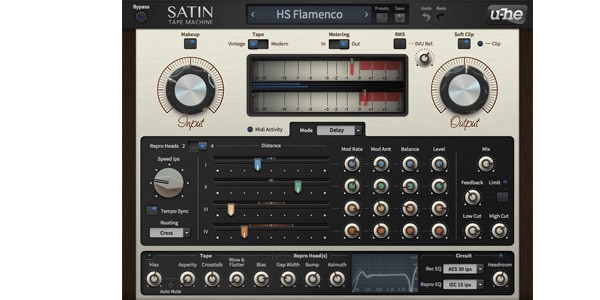


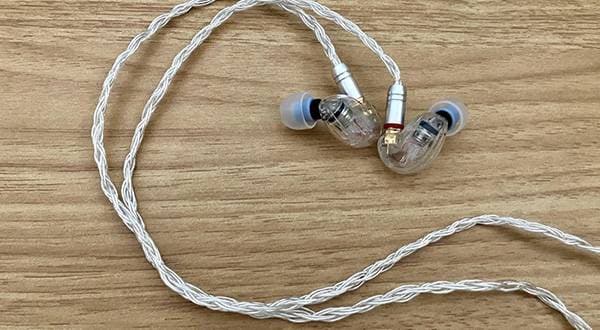
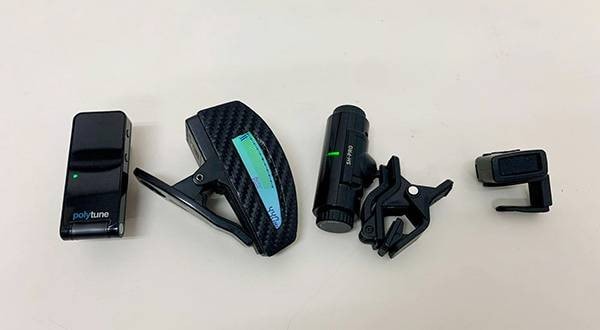

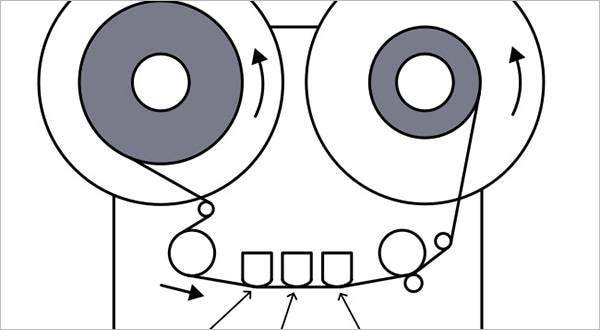
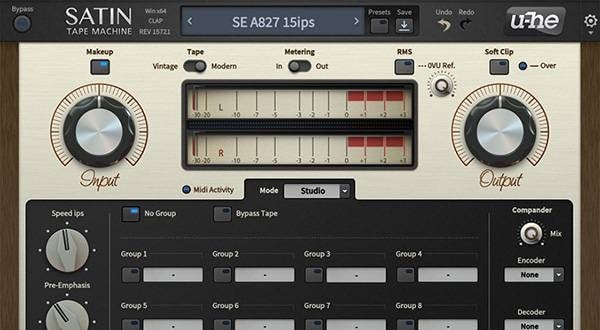
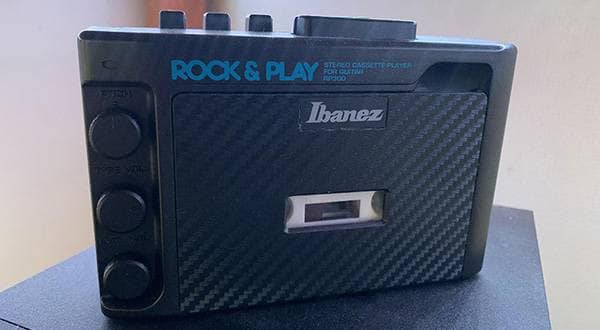
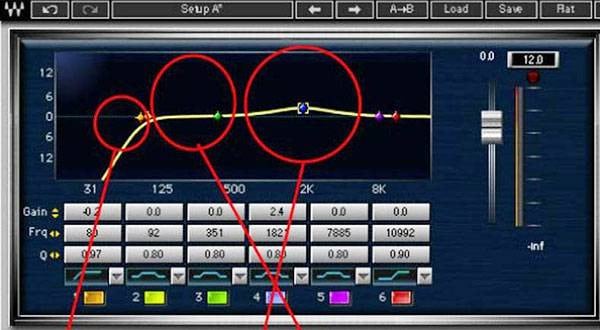
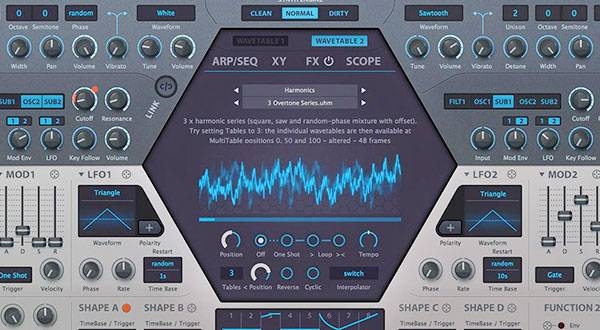

 厳選!人気のおすすめオーディオインターフェイス特集
厳選!人気のおすすめオーディオインターフェイス特集
 DTMセール情報まとめ
DTMセール情報まとめ
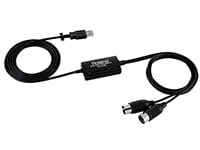 USB接続MIDIインターフェイス
USB接続MIDIインターフェイス
 USB接続対応のMIDIキーボード
USB接続対応のMIDIキーボード
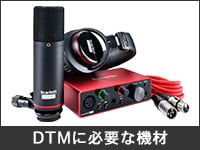 DTMに必要な機材
DTMに必要な機材
 DTM・DAW購入ガイド
DTM・DAW購入ガイド
